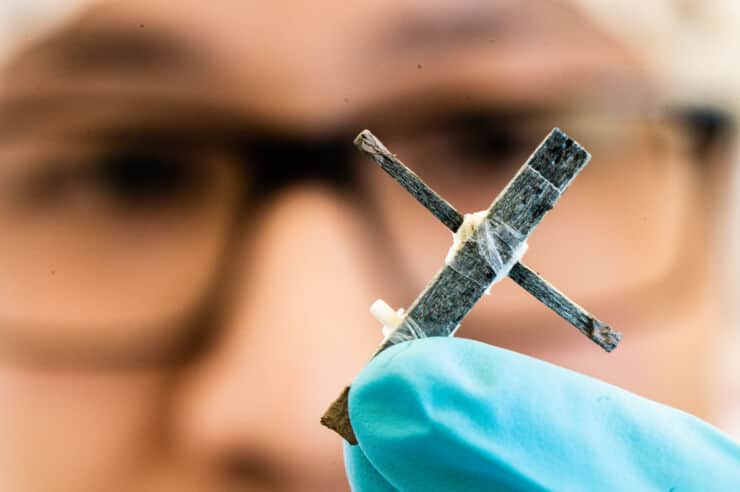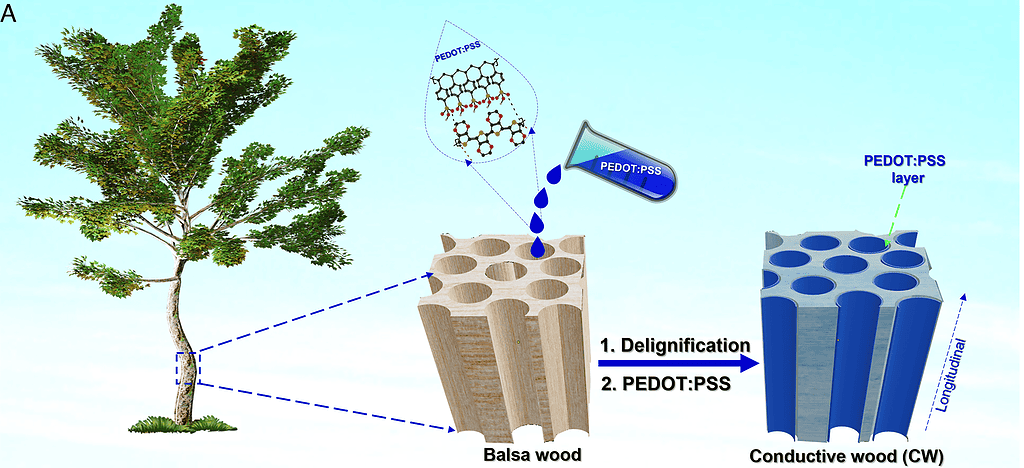Researchers at Linköping University and the KTH Royal Institute of Technology have created what was previously considered impossible: a wooden transistor. The study is more than just an engineering tour de force: it paves the way for further development of plant-based electronics

It’s bulky but it works
Transistors are the fundamental building blocks of modern electronics. Their invention in 1947 revolutionized electronics and paved the way for the development of integrated circuits. Basically, if transistors didn’t exist, we wouldn’t have devices like computers or smartphones.
A transistor is a semiconductor device that can amplify or switch electronic signals and electrical power. It has three terminals that carry electrical current and helps make a connection to external circuits. Conventionally, transistors are built from semiconductor materials like silicon or germanium. These materials have special electric properties that make them excellent at controlling the flow of electric current.
Wood is evidently not a semiconductor. Wood doesn’t conduct current. But if you treat it in a special way, the researchers found, it can be used in a transistor.
“We’ve come up with an unprecedented principle. Yes, the wood transistor is slow and bulky, but it does work, and has huge development potential,” says Isak Engquist, senior associate professor at the Laboratory for Organic Electronics at Linköping University.

Treating wood
The researchers used balsa wood, as this type of wood is evenly structured throughout. They then removed the lignin parts that lend rigidity to wood and bark. This left only the long cellulose fibers with hollow channels where the lignin had been. Then, they filled the channels with a conductive type of plastic. This resulted in a material that behaved similar to a semiconductor.
These channels were then filled with a conductive plastic, or polymer, called PEDOT:PSS, resulting in an electrically conductive wood material.

This resulting structure was able to regulate electric current, switch power on and off, and provide continuous power at the selected level. It was pretty slow (it took a second to switch it off and a few seconds to turn it on), but it worked.
“This has resulted in a transistor where all three terminals are made of conductive wood and which can be operated continuously at the selected conductivity without being limited by, e.g., saturation effects. We expect this device and concept will be a stepping stone for the development of wood-based electrical components,” the researchers explain.
The researchers didn’t have one specific application in mind.
“We didn’t create the wood transistor with any specific application in mind. We did it because we could. This is basic research, showing that it’s possible, and we hope it will inspire further research that can lead to applications in the future,” says Isak Engquist.
However, they explain this invention ties into the recently developed field of wood electronics. The nature of mass transport in plants has recently inspired the development of low-cost and sustainable wood-based electronics, but without transistors, this field can’t really take off.
A wood transistor, even a bulky one, could help regulate plant-based electronics, especially as the wood transistor is large and could regulate a high current with ease.
“As we step into the era of green technologies, there will be an increasing distinction between complex, nanoscale electronics on one hand and simple, large-size or large-area electronics on the other hand, the latter with special functionalities like biosensing, biointegration, biodegradability, etc. Bio-based materials will be the underpinning for the development of these functionalities.”
The study was published in PNAS.


